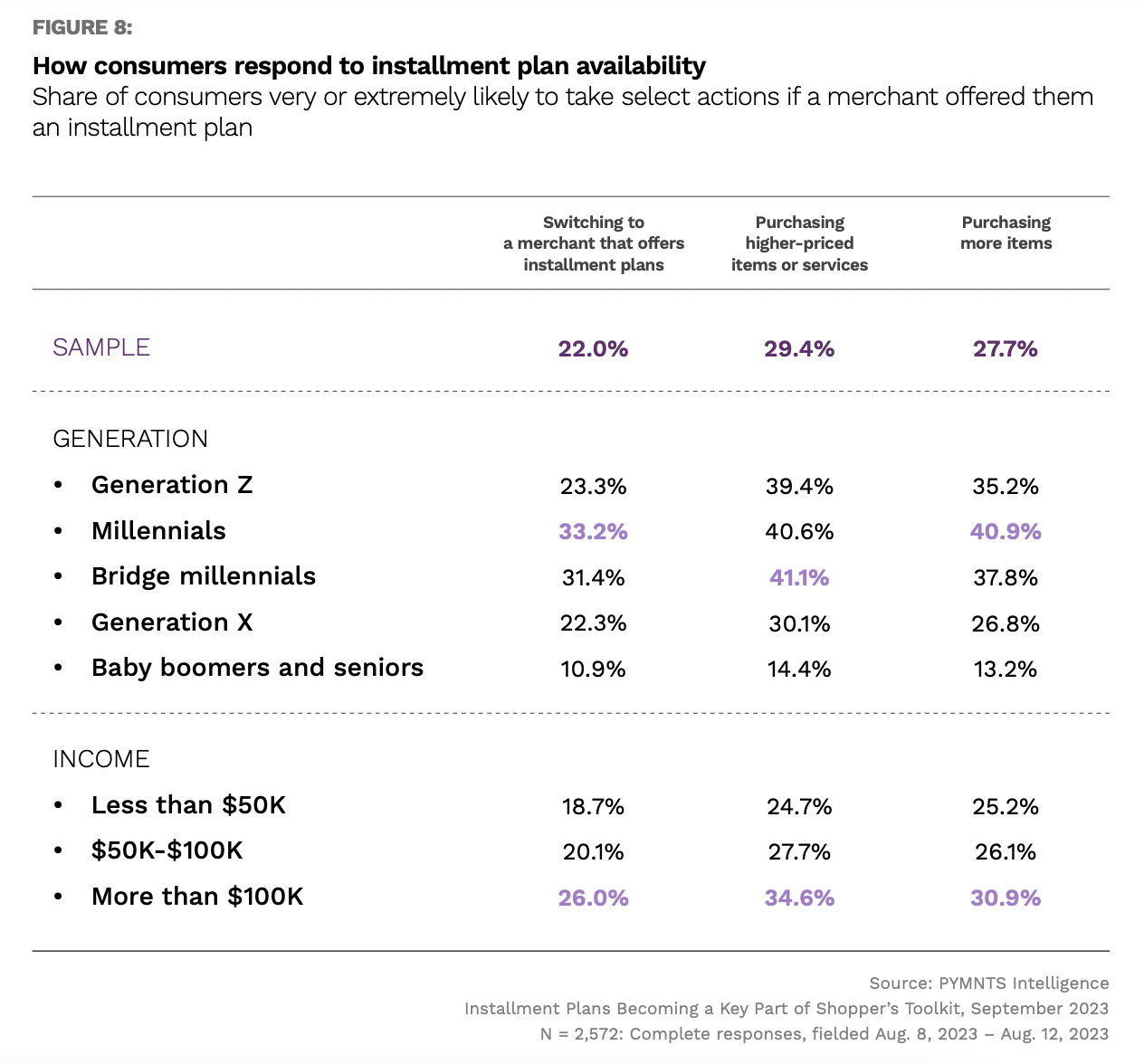Merchants Leverage Split-Pay Plans to Drive Spending With High-Income Shoppers

As brands and retailers look for ways to win the spending of their highest-value customers, PYMNTS Intelligence research found that installment plans linked to bank-issued credit cards can go a significant way toward boosting the average ticket of high-income shoppers.
By the Numbers

The 2023 PYMNTS Intelligence study “Installment Plans Becoming a Key Part of Shopper’s Toolkit,” created in collaboration with Splitit, drew from a survey of more than 2,500 U.S. consumers last summer to examines their use of various types of installment plans and how these affect their purchasing behaviors.
The results revealed that, while 29% of consumers would be very or extremely likely to consider a higher-priced item if they could use an installment plan linked to an existing bank-issued credit card, that share is even higher for high-income shoppers. Among those who make more than $100,000 a year, that figure jumps up to 35%.
The Data in Context
Installment or split-payment plans enable consumers to align their spending and credit management strategies. In fact, additional PYMNTS Intelligence research revealed that three in five shoppers used installment plans for consumer product purchases in the past year.
Plus, use of these options spans all age groups and income brackets. The widespread adoption of these flexible payment options indicates that shoppers are making more deliberate and calculated purchasing decisions.
Indeed, credit card payments are on the rise, outpacing debit card payment growth.
“In the U.S., GDV [gross dollar volume] increased by 4% with credit growth of 5% and debit growth of 3%. Outside of the U.S., volume increased 13% with credit growth of 13% and debit growth of 12%,” Mastercard CFO Sachin Mehra told analysts on the company’s latest earnings call.
Rival JPMorgan Chase also saw growth in consumers’ use of credit cards.
“Total debit and credit card spend was up 7% year on year, driven by strong account growth, and consumer spend remained stable,” CFO Jeremy Barnum noted on a call discussing the company’s most recent quarterly report.
